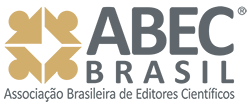O significado da fisioterapia para cuidadores de crianças com paralisia cerebral
DOI:
https://doi.org/10.33361/RPQ.2018.v.6.n.12.198Resumo
Resumo: O objetivo desse estudo é verificar o conhecimento geral do cuidador sobre paralisia cerebral (PC), os aspectos relacionados ao tratamento fisioterapêutico utilizado em crianças com PC, bem como a compreensão e a prática do cuidador na continuação em casa da fisioterapia. Trata-se de um estudo qualitativo em que foram entrevistados cinco cuidadores cujos filhos recebem tratamento fisioterapêutico para PC. Os resultados foram categorizados e discutidos de acordo com a temática, e mostraram a dificuldade do cuidador na compreensão da patologia e no tratamento fisioterapêutico de crianças com PC. Portanto, faz-se necessário maior interação entre fisioterapeuta-cuidador-paciente para oferecer mais orientações, esclarecer dúvidas e prestar assistência adequada às crianças com PC e aos seus cuidadores.
Palavras-chave: Paralisia Cerebral; Fisioterapia; Cuidadores; Metodologia qualitativa; Análise de conteúdo.
The meaning of physiotherapy for caregivers of children with cerebral palsy
Abstract: The purpose of the study is to verify the caregiver’s general knowledge about cerebral palsy (CP), the physical therapy treatment used in children with CP and the understanding of the caregiver about the physical therapy treatment at home for those children. It is a qualitative study obtained by content analysis. Five caregivers of children with CP that receive physiotherapy treatment were interviewed. The results were categorized and discussed according to the topics and they shown the difficulty of the caregiver in comprehend the patology and the physical therapy treatment in children with CP. Therefore, it is necessary a better interaction between professional-caregiver-patient to offer more orientation, clarify doubts and provide adequate assistance to the children with CP and their caregivers.
Keywords: Cerebral Palsy; Physiotherapy; Caregivers; Qualitative methodology; Content analysis.
Downloads
Referências
ALLEGRETI, A. L. C. et al. A relação e o estabelecimento de vínculo entre terapeuta e criança com atendimento em instituição e clínica particular. Cadernos de Pós-Graduação em Distúrbios do Desenvolvimento, São Paulo, v. 1, n. 1, p.35-49. 2001.
BALTOR, M. R. R.; DUPAS, G. Experiências de famílias de crianças com paralisia cerebral em contexto de vulnerabilidade social. Rev Latino-Am Enfermagem, Ribeirão Preto, v. 21, n. 4, p.1-8, abr./jun. 2013.
BRANDÃO, M. et al. Hand use at home and clinical settings by children with cerebral palsy: a qualitative study. Occup. Ther. Int., Londres v.22, n. 1 p.43–50, out. 2015.
BRASIL. Ministério da Saúde. Secretaria de Atenção à Saúde. Departamento de Ações Programáticas Estratégicas. Diretrizes de atenção à pessoa com paralisia cerebral. Brasília: Ministério da Saúde, 2013.
CARVALHO, J. T. M. et al. Qualidade de vida das mães de crianças e adolescentes com paralisia cerebral. Fisioter. Mov., Curitiba, v. 23, n. 3, p. 389-397, jul./set. 2010.
CHESHIRE, A.; BARLOW, J.H.; POWELL, L.A. The psychosocial well-being of parents of children with cerebral palsy: a comparison study. Disabil Rehabil, Londres, v. 32, n. 20, p.1673–1677, jan. 2010.
CHILUBA, B. C.; MOYO, G. Caring for a cerebral palsy child: a caregiver’s perspective at the University Teaching Hospital, Zambia Brian. BMC Res Notes, Berlin, v.10, n. 1, p.1-8, dez. 2017.
DAMBI, J. M.; JELSMA, J. The impact of hospital-based and community-based models of cerebral palsy rehabilitation: a quasi-experimental study. BMC Pediatrics, Londres, v.14, n. 1, p.1-10, dez. 2014.
DOMENECH, A. C. P. et al. Cerebral palsy: the meaning of physical therapy for mother caregivers. Fisioterapia em Movimento, Curitiba, v. 29, n. 4, p.757-766, dez. 2016.
FERRE, C. L. et al. Feasibility of caregiver-directed home-based hand-arm bimanual intensive training: A brief report. Dev Neurorehabil, Londres, v. 18, n. 1, p.69–74, set. 2015.
GOMES, R. C. N. T. et al. Efeitos do treinamento resistido na força de indivíduo com paralisia cerebral. Revista Brasileira de Prescrição e Fisiologia do Exercício, São Paulo, v. 9, n. 15, p. 545-554, set./out. 2015.
IMMS, C. et al. Diversity of participation in children with cerebral palsy. Developmental Medicine & Child Neurology, Londres v.50, n. 5, p. 363-369, mar. 2008.
JACQUES, K.C et al. Effectiveness of the hydrotherapy in children with chronic encephalopathy no progressive of the childhood: a systematic review. Rev Fisioterapia em Movimento, Curitiba, v. 23, n. 1, p. 53-61, jan./mar. 2010.
LAW, M. et al. Patterns of participation in recreational and leisure activities among children with complex physical disabilities. Developmental Medicine & Child Neurology, Londres, v.48, n. 5, p.337–342, mar. 2006.
LIN, K. C. et al. Effects of home-based constraint-induced therapy versus dose-matched control intervention on functional outcomes and caregiver well-being in children with cerebral palsy. Research in Developmental Disabilities, Oxford, v.32, n. 5, p.1483–1491, set./out.. 2011.
LOI, E. C. et al. Myofascial structural integration therapy on gross motor function and gait of young children with spastic cerebral palsy: a randomized controlled trial. Front. Pediatr., Lausana, v. 3, n. 74, p. 1-10, set. 2015.
MELLO, R.; ICHISATO, S. M. T.; MARCON, S. S. Family perception on the disease and physiotherapeutic care of individuals with cerebral palsy. Rev Bras Enferm., Brasília v. 65, n. 1, p.104-109, jan./fev. 2012.
MILBRATH, V. M et al. Ser mulher mãe de uma criança portadora de paralisia cerebral. Acta Paul Enfer., São Paulo, v. 21, n. 3, p.427-31. 2008.
MINAYO, M. C. S. et. al. Pesquisa social: Teoria, método e criatividade. 21. ed. Petrópolis. Editora Vozes. 2002.
MORAES, R. Análise de conteúdo. Revista Educação, Porto Alegre, v. 22, n. 37, p.7-32. 1999.
OLAWALE, O. A.; DEIH, A. N.; YAADAR, R. K. Psychological impact of cerebral palsy on families: The African perspective. J Neurosci Rural Pract., Mumbai, v. 4, n. 2, p.159-163, abr. 2013.
PALIGA, C. S.; COSTA, J. C. Orientações fisioterapêuticas aos cuidadores de crianças portadoras de Paralisia Cerebral. Rev Medica HSVP., Passo Fundo, v. 17, n. 37, p.21-24, 2005.
POOL, D. et al. The orthotic and therapeutic effects following daily community applied functional electrical stimulation in children with unilateral spastic cerebral palsy: a randomized controlled trial. BMC Pediatrics., Londres, v. 15, n. 1, p. 1-10, out. 2015.
REBEL, M. F. et al. Prognóstico motor e perspectivas atuais na paralisia cerebral. Rev Bras Crescimento Desenvolv Hum., São Paulo v. 20 n. 2, p. 342-50, ago. 2010.
RIBEIRO, M.F.M., BARBOSA, M.A., PORTO, C.C. Paralisia cerebral e síndrome de Down: nível de conhecimento e informação dos pais. Cienc Saude Coletiva, Rio de Janeiro, v.16, n.4, p. 2099-2106, out. 2011.
RIBEIRO, J.; MORAES, M. V. M.; BELTRAME, T. S. Tipo de atividade e relação interpessoal estabelecida entre fisioterapeuta e criança com paralisia cerebral no contexto de intervenção fisioterapêutica. Dinamys, Blumenau, v. 14, n. 1, p.89-95. 2008.
SARI, F. L.; MARCON, S. S. Participation of the family in physical therapy treatment of children with cerebral palsy. Rev. Bras Crescimento Desenvolv Hum., São Paulo, v. 18, n. 3, p. 229-239. 2008.
SILVA, C. C. B.; RAMOS, L. Z. Reação dos familiares frente à descoberta da deficiência do filho. Card. Terap. Ocup., São Carlos, v. 22, n. 1, p.15-23, out. 2014.
S?IMSEK, T. T.; TUG, G. Examination of the relation between body mass index, functional level and health-related quality of life in children with cerebral palsy. Turkish Archives of Pediatrics, Istambul, v. 49, n. 2, p.130-137, jun. 2014.
TURATO, E. R. Métodos qualitativos e quantitativos na área da saúde: definições, diferenças e seus objetos de pesquisa. Rev Saúde Pública., São Paulo, v. 39, n. 3, p.507-514. 2005.
TRIVIÑOS, A. N. S. Introdução à pesquisa em ciências sociais: a pesquisa qualitativa em educação. 1. ed. São Paulo: Atlas, 1987.
Downloads
Publicado
Como Citar
Edição
Seção
Licença
Essa revista é licenciada pelo sistema creative commons 4.0, não-comercial.

















